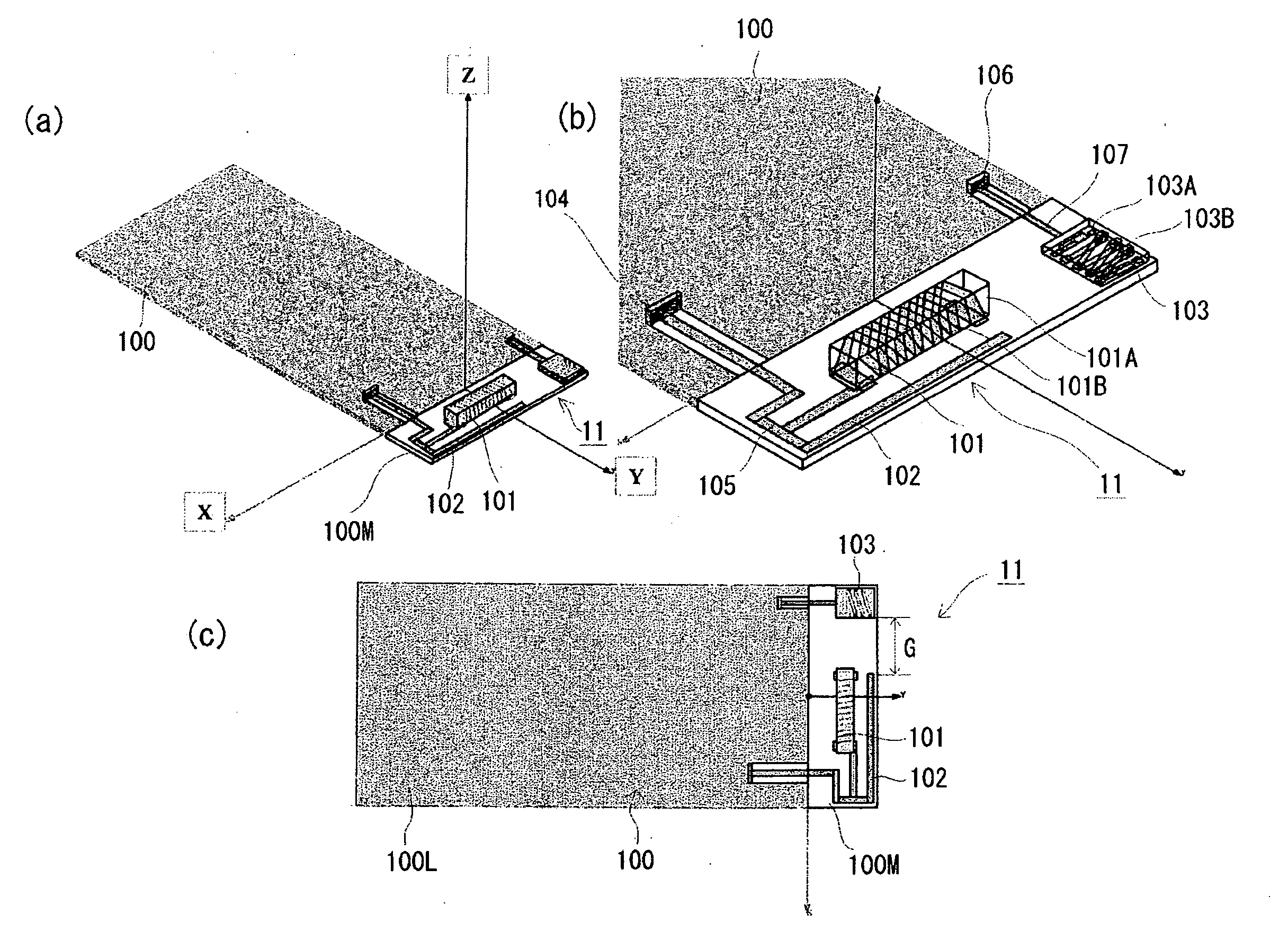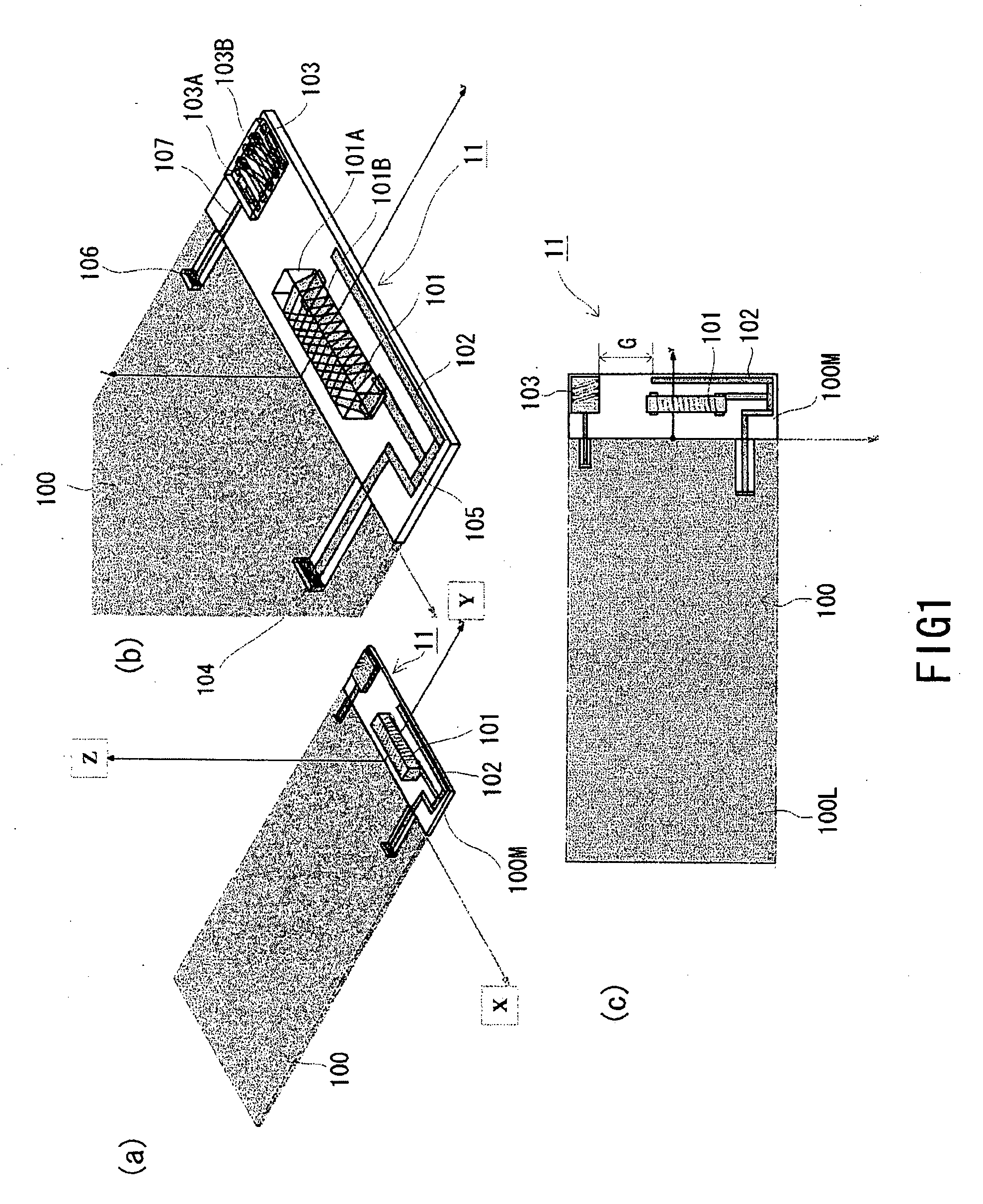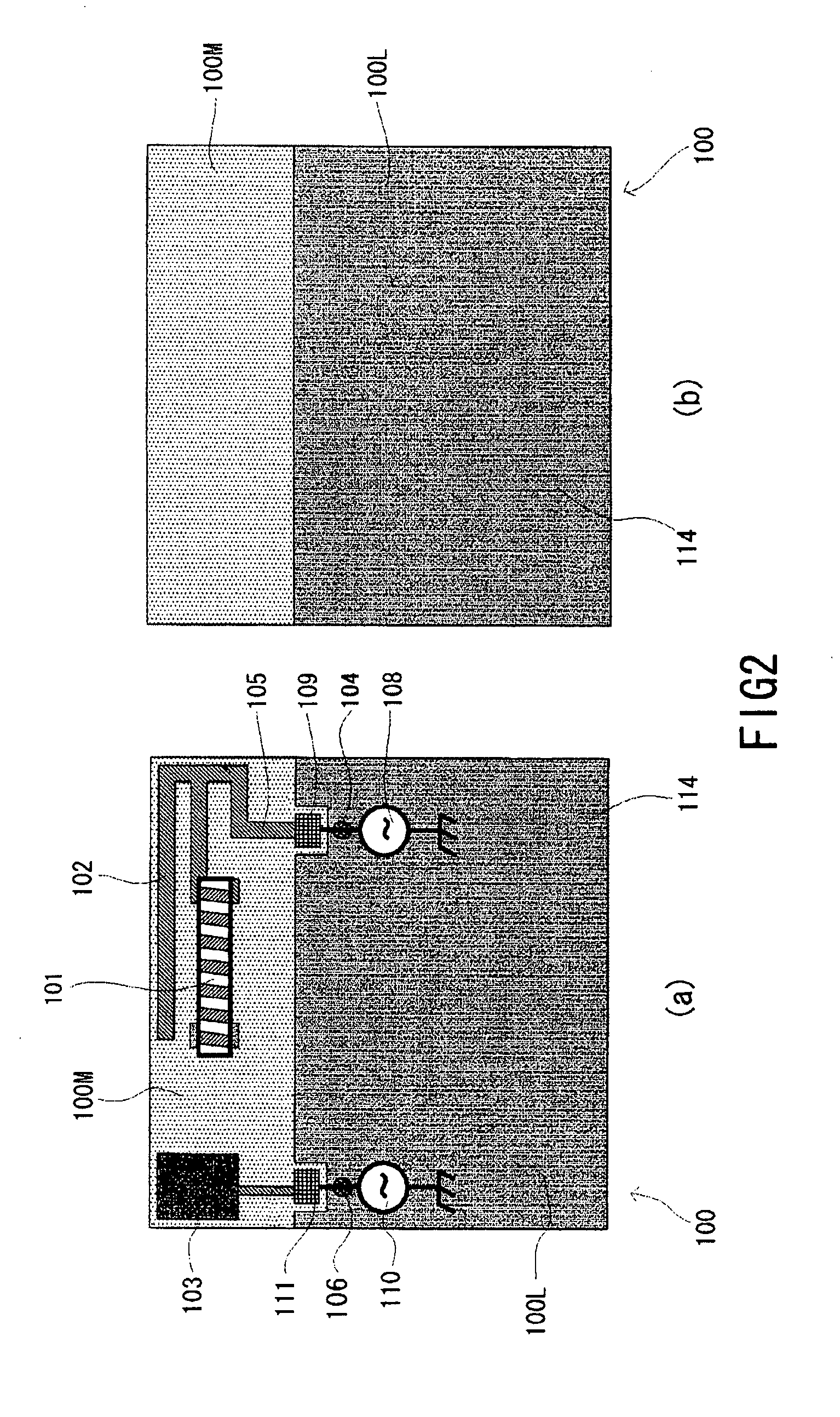Antenna device and wireless communication apparatus using same
a wireless communication apparatus and antenna device technology, applied in the field of antenna devices, can solve the problems of complicated configuration, occupying space in the antenna device area of the antenna circuit, and affecting the operation so as to improve the degree of freedom of arrangement (layout) of the antenna device, save space for the antenna device, and miniaturize the wireless communication apparatus
- Summary
- Abstract
- Description
- Claims
- Application Information
AI Technical Summary
Benefits of technology
Problems solved by technology
Method used
Image
Examples
first embodiment
[0090] As shown in FIGS. 1(a), 1(b), and 1(c), the antenna device 11 of the first embodiment includes a substrate 100, the first antenna 101 and second antenna 102, and third antenna 103, all being mounted on a substrate 100.
[0091] Each of these first, second, and third antennas operates in transmitting and receiving frequency bands each being different from one another. More specifically, the first antenna 101 operates in a GSM band (900 MHz band), the second antenna 102 in a DCS band (1700 MHz band) and a PCS band (1800 MHz band), and the third antenna 103 in an UMTS band (2200 MHz band), thereby achieving the quad-band type antenna device 11.
[0092] Thus, the first antenna 101 operates in the transmitting and receiving frequency band of frequencies being lower than those in the DCS band and the PCS band applied to the second antenna and than the UMTS band applied to the third antenna 103. The second antenna 102 operates in two transmitting and receiving bands of the DCS band and ...
second embodiment
[0187] In the antenna device 21 of the first example of the second embodiment, as shown in FIGS. 16(a) and 16(b), the first antenna 101 is mounted on the main face (surface) of the substrate 100 and the second antenna 102 is mounted on the rear face 100R of the substrate 100. The second antenna 102 is connected to a line 105 for the first antenna 101 formed on the main surface 100P on a power feeding side via a through hole electrode 116.
[0188] Operations of the antenna device 21 are the same as those of the antenna devices of the first and second examples of the first embodiment in that signals in the GSM band being a transmitting and receiving frequency band for the first antenna 101 and signals in the DCS and PCS bands being a transmitting and receiving frequency band for the second antenna 102 are processed by the same transmitting and receiving circuit and in that a pattern antenna making up the second antenna 102 is connected to the line 105 which connects a chip antenna makin...
third embodiment
[0207] In the antenna device 30 of the third embodiment, as shown in FIGS. 19(a) and 19(b), the second antenna 102 is configured as a chip antenna as for the first antenna 101.
[0208] That is, the second antenna 102 consists of a base body 102A made up of a dielectric and a conductor 102B wound around a surface of the base body 102A. However, the second antenna 102 is constructed so that its length is the same as that of the first antenna 101 and its width and height are smaller than that of the first antenna 101.
[0209] Also, the second antenna 102 is constructed so that an interval between the conductors 102B is larger than that applied to the first antenna 101 and so that the conductors 102B is wound around the base body 102A with a smaller number of windings compared with the number of windings used for the first antenna 101.
[0210] This is because the transmitting and receiving frequencies to be used by the second antenna 102 are higher than those used by the first antenna 101. ...
PUM
 Login to View More
Login to View More Abstract
Description
Claims
Application Information
 Login to View More
Login to View More - R&D
- Intellectual Property
- Life Sciences
- Materials
- Tech Scout
- Unparalleled Data Quality
- Higher Quality Content
- 60% Fewer Hallucinations
Browse by: Latest US Patents, China's latest patents, Technical Efficacy Thesaurus, Application Domain, Technology Topic, Popular Technical Reports.
© 2025 PatSnap. All rights reserved.Legal|Privacy policy|Modern Slavery Act Transparency Statement|Sitemap|About US| Contact US: help@patsnap.com



